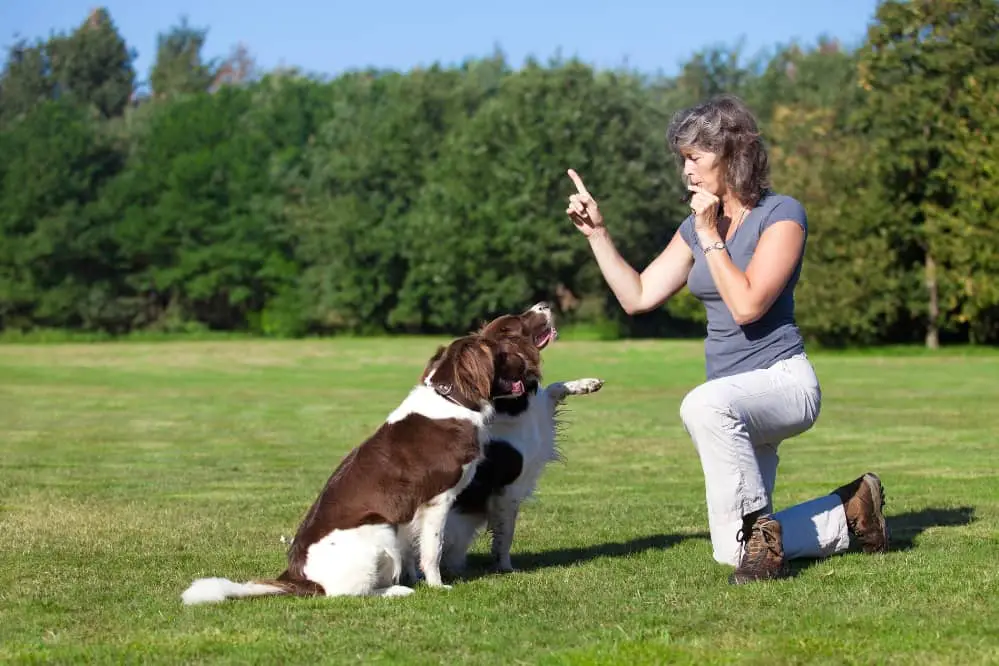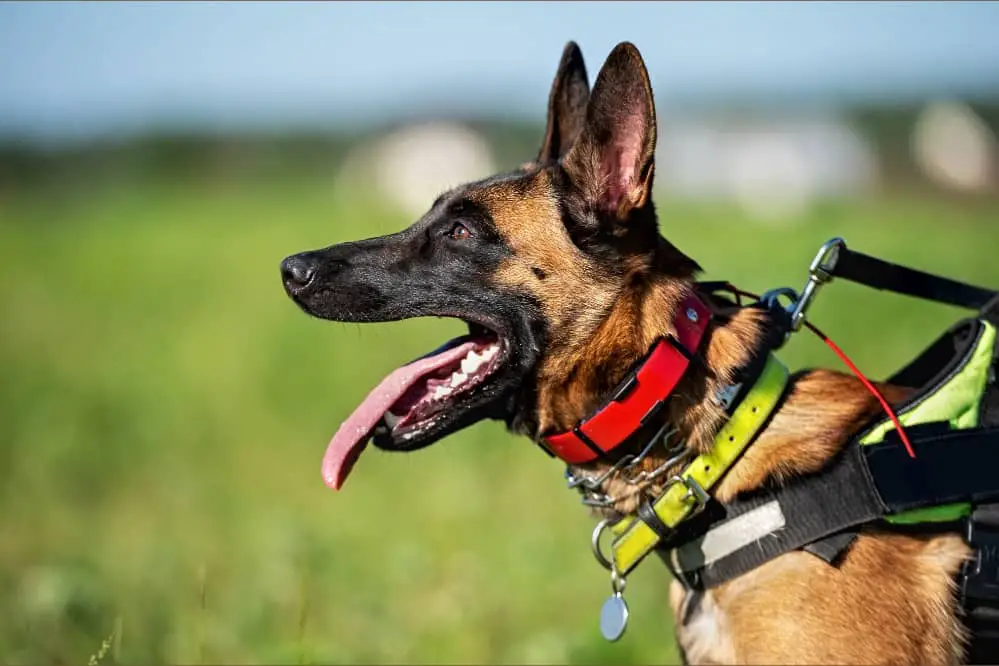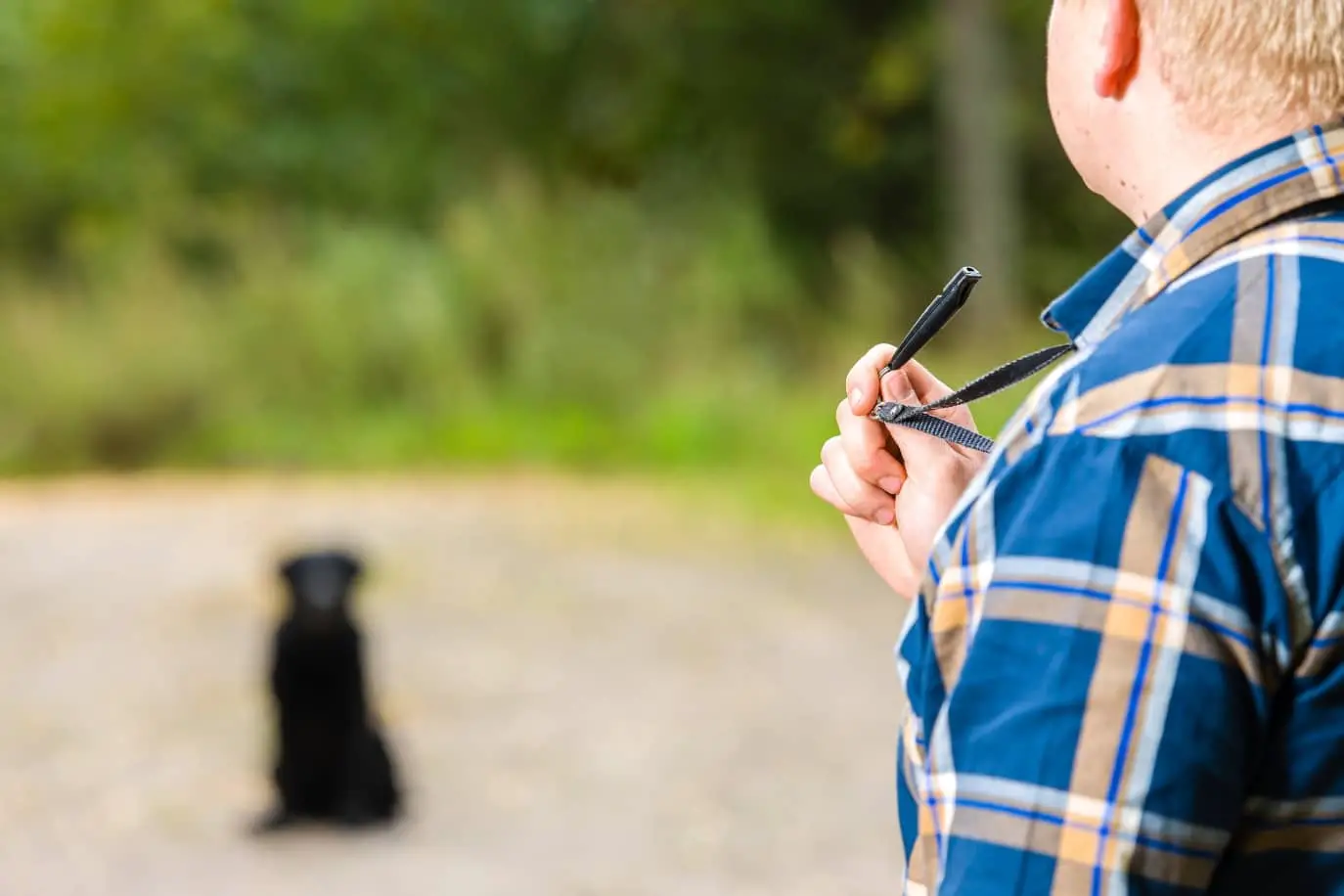Typically, when considering dogs with disabilities, our minds tend to gravitate toward those with apparent physical abnormalities, such as missing one or more limbs or eyes or being paralyzed. Unfortunately, we may fail to recognize the invisible disabilities a dog could be coping with. Deafness is one such concealed challenge. Deafness in dogs can be result of genetics, aging, injury, or infection. Though it can present some challenges for pet owners, it is essential to note that deaf dogs can still live happy and healthy lives.
One question that often arises about deaf dogs is whether they can hear a dog whistle. The answer is: it depends on the degree or intensity of deafness. To completely deaf dogs ,dog whistle is inaudible but partially deaf dog can hear and react to a dog whistle.
Can Deaf Dogs Hear High-Pitched Sounds?
It depends on the degree of deafness in dog. A complete deaf dog can not hear any sound, including high-pitched sounds. A partially deaf dogs however are able to perceive sound. They still have some residual hearing, which means they may be able to detect vibrations or feel the pressure changes that high-pitched sounds create.
We say ‘may be’ because some dogs with residual hearing may not respond to high-pitched. This is because high-pitched sounds are typically outside a dog’s natural hearing range. Dogs hearing range typically extending up to 65,000 Hz. Most dog whistles and other high-pitched sounds are still above this range and inaudible to dogs.
Can A Deaf Dog Hear An Ultrasonic Whistle?
Deaf dogs cannot hear any sound, including ultrasonic sounds or whistles. Ultrasonic whistles produce sounds above the range of human hearing and are often used for dog training or to get a dog’s attention without disturbing people nearby. However, they are not effective for deaf dogs since they cannot hear any sound, regardless of the frequency.
Even if a deaf dog has some residual hearing and can still detect some vibrations or pressure changes, it is unlikely that it will respond to an ultrasonic whistle. This is because deaf dogs rely on visual cues, hand signals, and other forms of communication that do not involve sound.
How Do You Get A Deaf Dog’s Attention?
In order to communicate with a deaf dog, it’s crucial to capture their attention first before giving commands or instructions. Unlike hearing dogs, you can’t simply call out deaf dogs by their names, which means you’ll have to use other methods to gain their focus. Fortunately, there are some effective ways to get deaf dogs’ attention and make them look toward you.
Use a Vibrating Collar
A vibrating collar should be introduce slowly and positively so that your deaf dog associates it with a positive outcome. Vibrating collar vibrates when a button is pressed, which can signal the dog to come to you or pay attention to a particular command.
Use Hand Signals
Deaf dogs rely on visual cues and hand signals, so using consistent hand signals for each command is crucial. For example, use a closed fist to signal “sit” or a sweeping motion of your hand to signal “come.” Consistency is key, so ensure that everyone interacting with the dog uses the same hand signals.
Use a Flashlight or Visual Cues
A flashlight or other visual cues can be used to get a deaf dog’s attention. For example, shining a flashlight on the ground can signal the dog to come to you. Similarly, waving a towel or other object can signal the dog to pay attention to you.
Are There Whistles For Deaf Dogs?
Though completely deaf dogs cannot hear any whistle, special whistles have been created for dogs with some residual hearing. These whistles emits sound at a lower frequency than regular dog whistles, between 500Hz and 1,000Hz. This frequency range may be more audible to dogs with partial hearing loss.
There are over 30 different dog whistle frequencies.
Consult your veterinarian or dog trainer so that you choose appropriate dog whistle for your dog.Just to be safe use whistles with adjustable frequencies.
Are Dog Whistles Bad For Training?

Dog whistles such as ultrasonic whistles, produce a sound that is inaudible to human ear but audible to most dogs. This can be very helpful if you want to command, train or communicate with your deaf dog without disturbing people nearby.
So dog whistles can be useful tool for training however but do not rely solely on it for training.
Some people believe that relying too heavily on a whistle can lead to a dog becoming dependent on the sound and ignoring other cues or commands. This is why it is important to incorporate other training methods to reinforce good behavior and teach your dog new commands.
Training Deaf Dogs With Dog Whistles
As mentioned above, completely deaf dogs cannot hear dog whistles, so it is not possible to train them using these devices. However, this doesn’t mean that deaf dogs can’t be trained. In fact, their inability to hear sound make them more attuned to visual cues without external sound distraction making it more easier to train. However, training a deaf dog requires a different approach from training a dog with normal hearing. The most important thing is to establish a communication system that the dog can understand. In addition, deaf dogs are also known to be more focused on their owners since they rely on them for communication.
Here are some tips on how to train a deaf dog effectively:
Establish A Visual Communication System
Since the dog cannot hear vocal commands, you need to use visual cues to communicate with them. This can include hand signals, body language, flashlights, and facial expressions. Choose simple and clear signals that are easy for the dog to understand.
Use Positive Reinforcement
Deaf dogs respond well to positive reinforcement training. Reward them with treats, praise, or toys when they follow a command correctly. Avoid punishment or negative reinforcement, as this can damage the dog’s trust and motivation and lead to fear and anxiety in the dog.
Keep Training Sessions Short And Frequent
Short and frequent training sessions are more effective than long, infrequent ones. Ten to fifteen-minute sessions a few times a day are ideal for training a deaf dog.
Start With Basic Commands
Start with basic commands such as “sit,” “stay,” and “come.” Use the visual cues consistently and reinforce the command with rewards when the dog follows correctly. You can progress to more advance commands once they mastered these basic commands.
Train In A Quiet Environment
Deaf dogs rely on visual cues, so it is essential to train them in a quiet environment without distractions. This will help the dog focus on the visual cues and learn more effectively.
Use Vibrating Collars
Vibrating collars can be an effective tool but it should be used only under the supervision of a professional trainer.
The collar vibrates when a command is given, and the dog learns to associate the vibration with the command. However,
Be Patient And Consistent
Training a deaf dog can take time, so it is essential to be patient and consistent. Avoid getting frustrated, as this can negatively affect the training. Keep practicing with the visual cues, and reinforce the commands with rewards until the dog masters the skill.
Work With A Professional
Working with a professional dog trainer is always advisable. They can assist you in implementing effective training plan for your deaf dog. They can provide guidance on using visual cues and other training methods and help address any behavioral issues that may arise.
Are Vibration Collars Good For Deaf Dogs?

Yes, vibrations collars can be used as alternative to dog whistles . They are often used for training purposes or to discourage barking. For deaf dogs, vibration collars can be an effective tool for communication, but it is important to consider their effectiveness, quality, safety and potential drawbacks before using them.
One obvious benefit is that you can communicate with your deaf dog without relying on sound. The collar produces a vibration that dogs can feel, alerting them to a command or cue. This can be particularly helpful for deaf dogs, who may not respond to verbal cues or traditional training methods.
However, there are some potential drawbacks to using vibration collars. Some dogs may find the vibration unpleasant or aversive, which can lead to anxiety or fear. It can also be problematic if the collar is lost or damaged.
Some vibration collars can be too harsh or intense for some dogs, causing pain or injury. When picking vibration collar for your deaf dog It is crucial to choose based on your dog’s size, weight, and temperament. Also do not deviate too far from manufacturer’s instruction.
In short, vibration collars can be a useful nonverbal toll for communicating with deaf dogs, but they should be used carefully and in conjunction with other training methods. Consider the potential drawbacks and risks, choose a quality and safe collar, and use positive reinforcement techniques to reinforce good behavior.
Summary
A deaf dog cannot hear any sound so getting their attention requires the use of visual cues like hand signals or body gestures and communication devices designed explicitly for deaf dogs, such as vibrating collars, light-based systems, and specialized collars and harnesses. Remember that training a deaf dog may require more patience and consistency but with the right training and care, deaf dogs can lead happy and fulfilling lives and be just as loving and loyal as any other dog.

